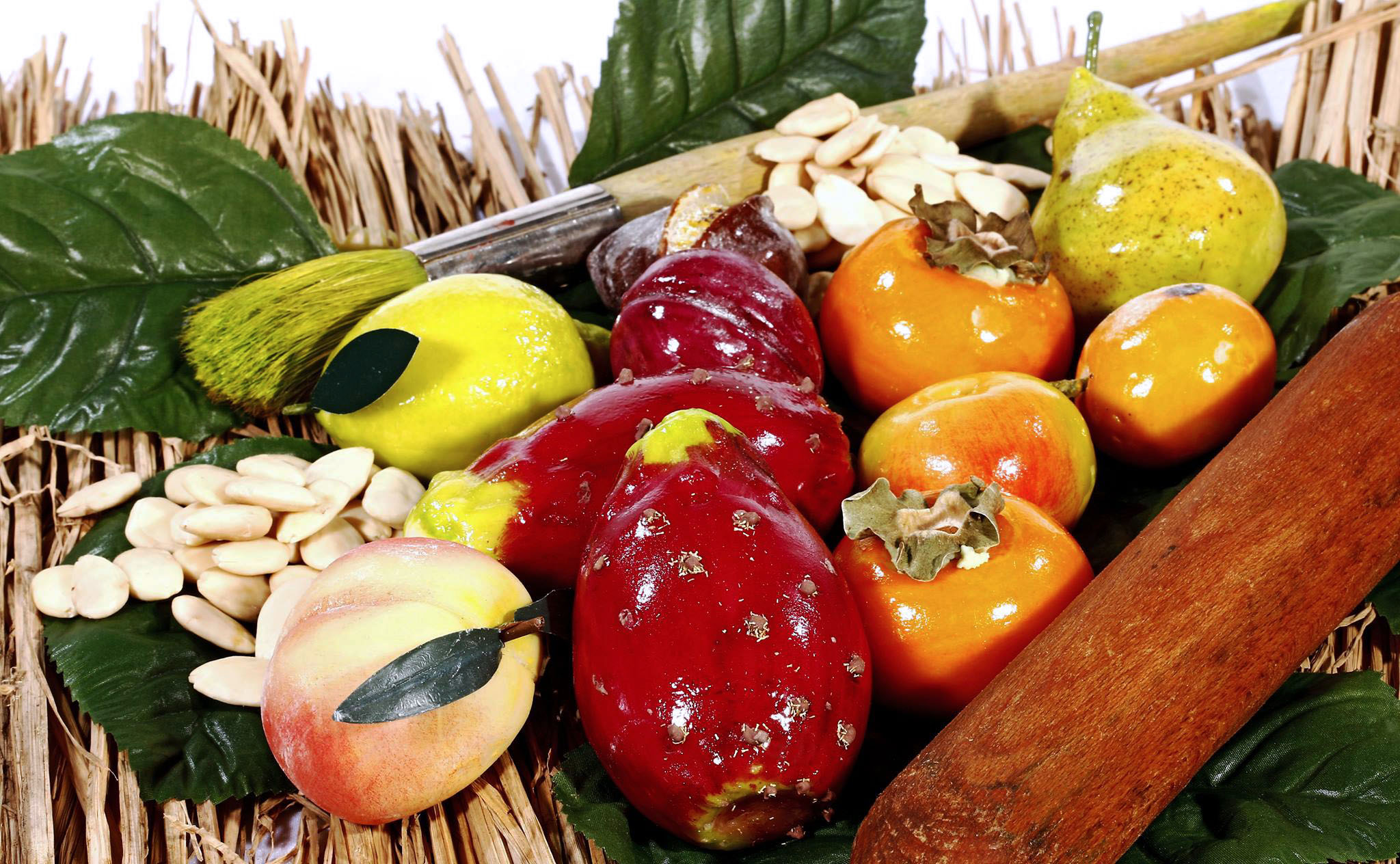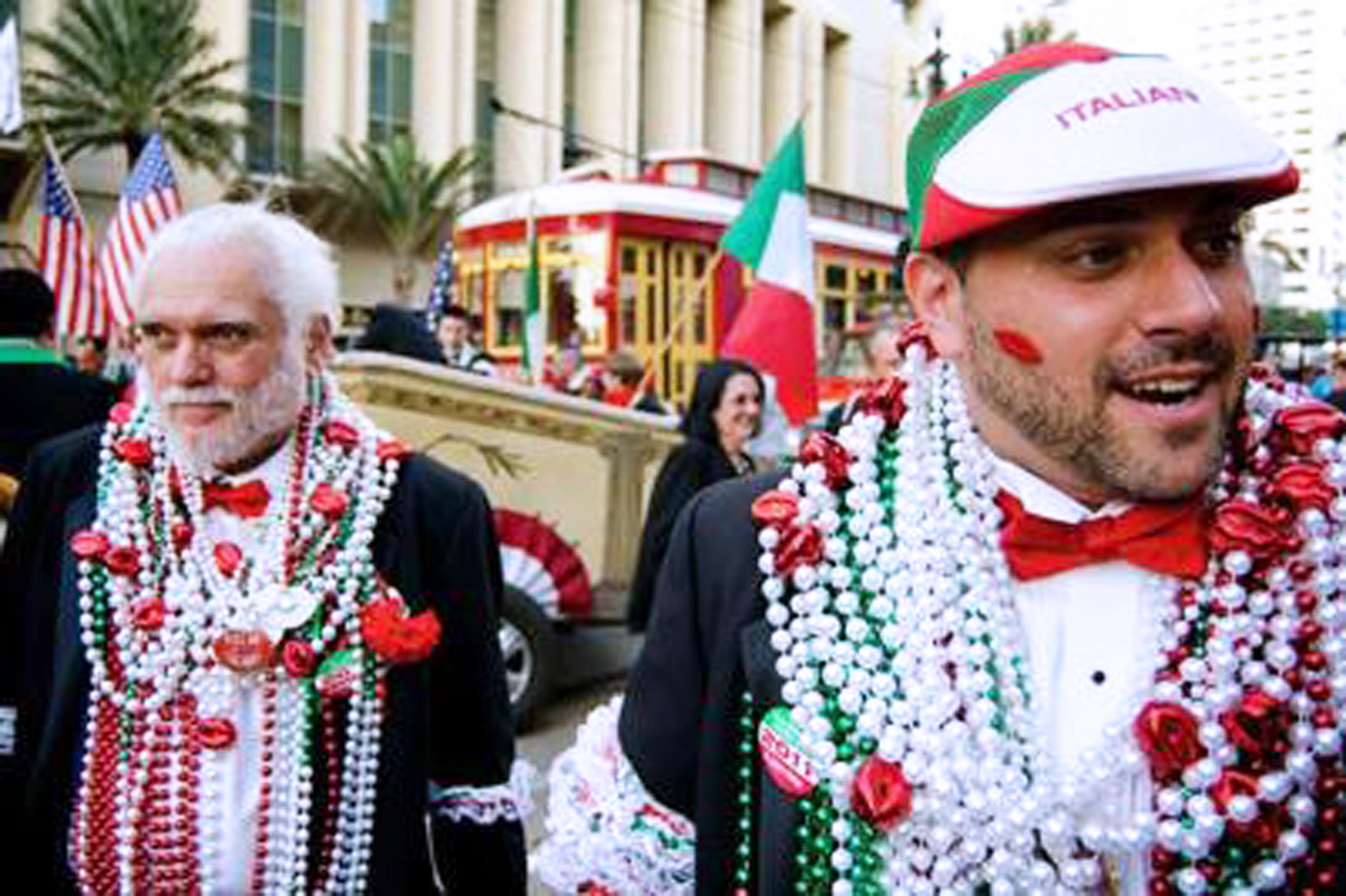The Sicilian Marzipan, probably best recognized as decorative desserts shaped like fruits, are a well-known tradition in Sicily. Pastry shops in Taormina and Palermo display these sweets in their windows and passersby stop and gaze in amazement. Known as Frutta di Martorana, these life-like fruits appear real, but are made of almond paste. The consistency makes it easy to mold into different shapes, but it is in the hand-painting that the real artistry takes place.
This tradition began during the 12th century in Palermo, at the Convent of the Martorana. The good sisters decided to sculpt fruits from marzipan and hung them from their empty trees to impress the Archbishop during his Easter visit. They created dozens of marzipan fruits, painting them to look like the genuine article. Strung from trees in the cloister garden, the Archbishop was summarily impressed, so the nuns continued to make the confections and began to sell them to parishioners.
This convent was, at one time, a part of the Chiesa di Santa Maria dell’Ammiraglio. Mother Superior Eloisa Martorana founded this Benedictine convent in 1194 and so the convent was named in her honor. The convent no longer exists, but the church is fondly known as La Martorana and is world-famous for its stunning mosaics.
Some Frutta di Martorana is made using molds, but the painting is still done by hand. This labor-intensive art takes three days on average, with the first day dedicated to making the marzipan after blanching, peeling and grinding the almonds. They are then formed into shapes and placed on drying racks. Day two consists of painting the marzipan with liquid food coloring diluted in water. On the third day, the confections are glazed with diluted powdered gum Arabic and allowed to dry. The palm-sized sculpted sweets are remarkably realistic – apples with blotches, peaches with a fine coat of fuzz, strawberries with seed dimples and mandarins demurely partially peeled to reveal the pithy fruit. This kind of detail can only be achieved by painstakingly hand-painting each piece with multiple layers of color, right down to a pear’s freckles. Today, the marzipan is molded into several different forms and are just as lifelike as the fruit. These can be stored for three months in airtight containers. On your next trip to Sicily, treat yourself to some Frutta di Martorana and you will never forget its taste and texture.
Frutta di Martorana
Ingredients
For the almond paste
- 1 lb peeled and chopped almonds or almond flour
- 1 lb sugar
- 4 oz water
- 1/2 oz lemon juice
- 1/2 tsp vanilla extract
For the decoration
- food coloring, various colors
- gum Arabic
- plastic leafs and fruit stalks
Preparation
Blanche and then peel the almonds. Finely grind the peeled almonds or alternatively use the almond flour. In a pan, heat the water and dissolve the sugar until it boils, a medium low flame is best. Turn off the heat and add several drops of vanilla extract and the almond flour. Stir continuously until you get a soft, but solid dough that you can easily handle and remove from the pan. Pour the mixture onto your work surface. Once the dough has cooled to lukewarm, begin to knead until the dough becomes smooth and homogeneous. It can then be modeled into fruit and vegetables shapes. Let the little sweets dry for at least 20 hours, after that you can paint them with bright food coloring with a finishing lacquer of gum Arabic. Complete your Frutta di Martorana with plastic leafs and fruit stalks to make them more realistic. Makes about 8-10 pieces.





